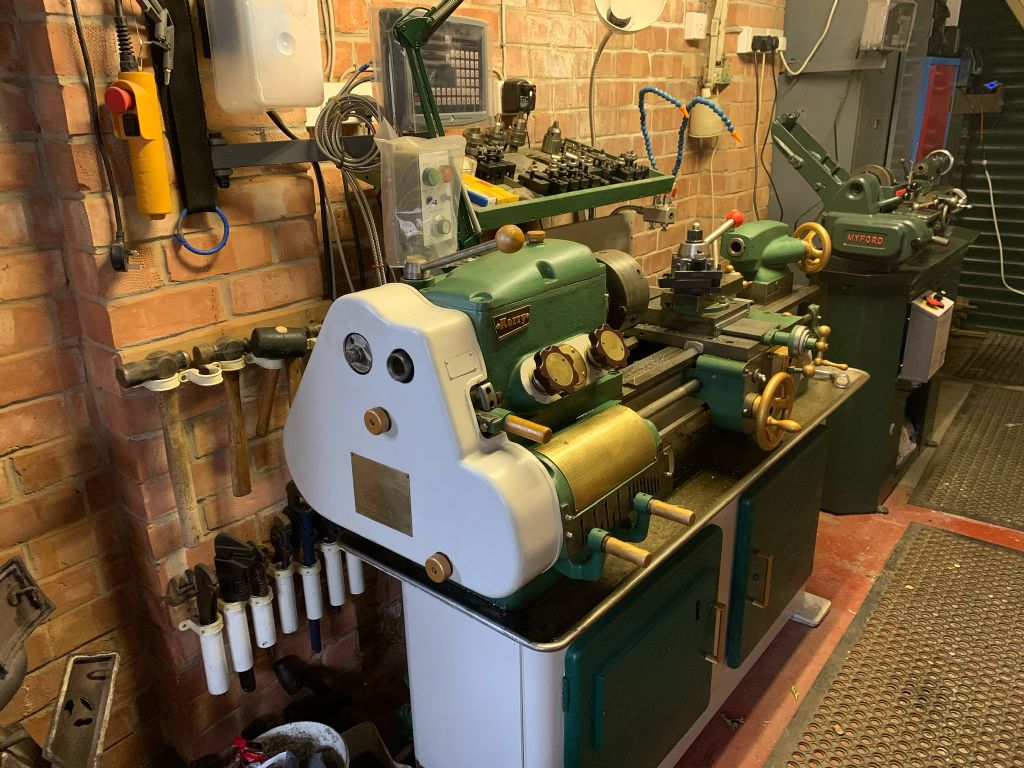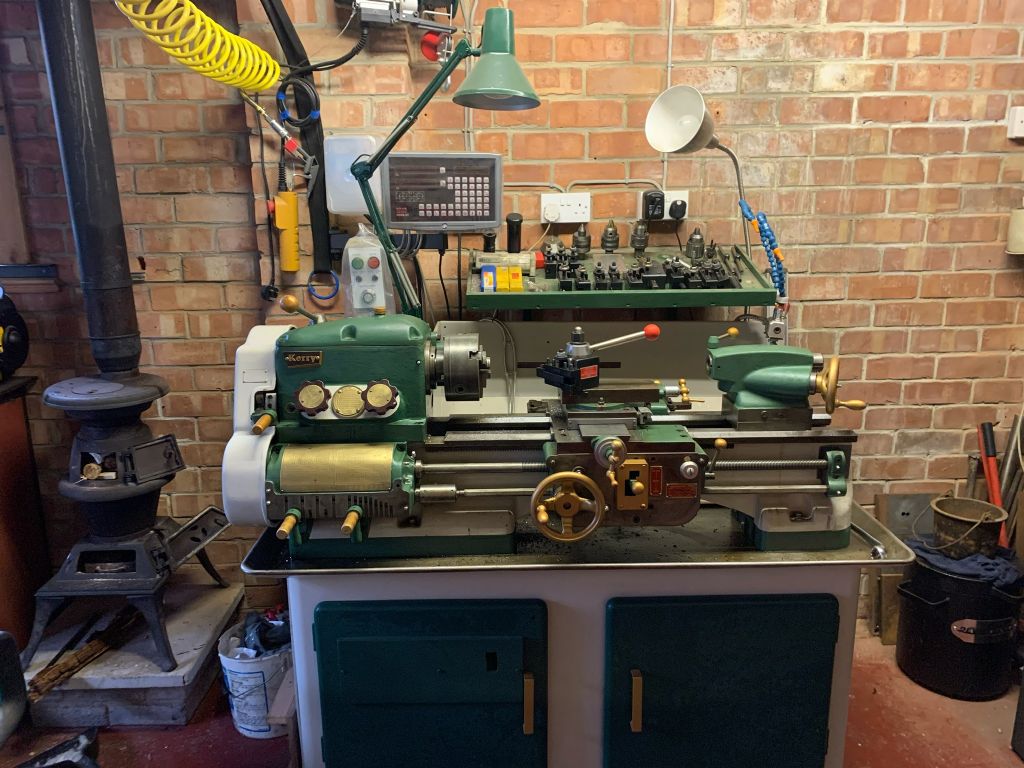Posted by Michael Gilligan on 18/03/2021 09:32:28:
If the velocity ratio of the gear engagement fluctuates; then even a ‘perfect’ lead-screw will effectively vary in pitch, and the effect must be carried through to the finished item as periodic errors.
Totally irrelevant to most users, of course … just interesting.
Very much so. (Both the irrelevance and the interest). As you know, math is not my thing (being an English Lit graduate and all), but I am thinking that if we take a 4" diameter change gear, with a circumference of just over 12", each one thou of deviation on a tooth profile is an error of (very roughly) 1 in 12,000.
But that is only in the radial positioning of the gear and the attached leadscrew shaft. The position of the halfnut and thus the carriage and attached cutting tool is determined by the, say, 8tpi leadscrew thread with a pitch of .125" .
So our one thou deviation from true tooth form becomes an error of 1/12,000th of .125" of carriage position. Which, I think but please check this, comes out to about 0.00001 "
So each one thou of mispositioning or misprofiling of a gear tooth would result in a screwcutting pitch error of one hundredth of a thou.
And that is if the error is on the final gear on the leadscrew itself. Error further up the gear train would be reduced by the reduction gearing.
So even if the total of misplaced gear teeth through the whole train totalled a phenomenal 100 thou, the effect on the screwcutting pitch would be only 1 thou. In reality, total misplacement of gear teeth is going to be a fraction of that. Maybe more like 10 thou max worst case secenario., giving a screwcutting pitch error of one tenth of a thou.
So still comes out to a way higher level of precision than the mass produced leadscrew on a hobby lathe or most toolroom lathes for that matter.
Not irrelevant to the current thread because it does demonstrate why there is no need for precision gears on a change gear drive train as queried above. Any old rough gears will do the job really. And the power they are transmitting is negligible. The lathe motor might be 1hp but the force needed to turn a leadscrew can be provided by two fingers on a leadscrew handwheel so is a fraction of that. Hence, change gears can be made out of aluminium or delrin and will probably outlast most of us.
Just a thought.
Green Techie.










